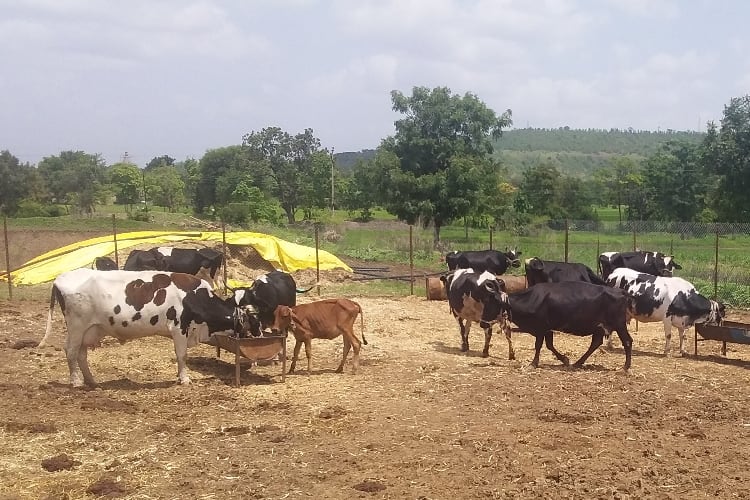The last time India locked horns with the US, when Indian negotiators walked out of multilateral trade deal talks last November, local dairy figures were cock-a-hoop that America had not been not granted access to its enormous market for dairy goods.
Months of protests by unions, farmers groups and lobbies against the agricultural and dairy free-trade provisions of the Regional Comprehensive Economic Partnership (RCEP), were shown to have been successful after India pulled out of those negotiations.
At home, India’s obdurance was widely seen as a win, with the influential Federation of Indian Chambers of Commerce and industry lauding how their country stuck to its guns.
“I compliment Prime Minister Narendra Modi for taking a very pragmatic decision towards safeguarding the interest of Indian industry and the country as a whole,” its president, Sandip Somany, said at the time.
Indian dairy producers had worried that a deal could have a disastrous impact on domestic farmers, who already face a struggle to subsist on the prices they are paid for their milk. It is estimated that 150m livestock farmers depend on dairy for their livelihood.
The Indian Coordination Committee of Farmers Movements had warned that a level playing field between India and the US could never be achieved because of heavy subsidies given to American dairy farmers.
The RCEP negotiations in Bangkok ended with 15 nations agreeing on a trade deal and India remaining on the sidelines.
But yesterday it was announced that President Trump will visit Delhi from February 24-25. This will be to “further strengthen the US-India strategic partnership and highlight the strong and enduring bonds between the American and Indian people,” the White House said in a tweet.
Reading between the lines, experts believe the motive of the mission is to reopen the stalled trade negotiations, this time just between the two nations, in the hope of achieving a so-called “mini deal”.
India enjoys a gaping trade imbalance that sees it benefit to the tune of US$16bn. The US wants to wipe this out by ramping up its share of overall bilateral trade worth an estimated US$142.1bn in 2018.
The Trump administration has been pressing India to reduce tariffs to narrow the trade surplus. New Delhi, for its part, has argued it is already a major buyer of American energy and has also ramped up its defense purchases from the US in recent years.
Fresh from America’s breakthrough “phase one” agreement with China last month, which Trump declared to be “one of the greatest trade deals ever made”, the Indian market is now firmly in its sights. But to tap into it, officials need to break down the barriers that have halted its progress as an export market.
“India… we’ve done frankly very little [with it] and we haven’t had the same trade relationships—there’s been a lot of barriers,” said USDA secretary Sonny Perdue last month.
“I am hoping and I’m expecting that we can make some progress with India in agricultural products and trading relationships.”
Signing an agreement, even if it is only a mini one covering dairy and agriculture, would put India on the way to becoming just as important as a trading partner to the US as its billion-member club neighbor China in just 20 years, Perdue predicts.
Trade barriers
India has shown itself to be a spiky negotiator over the years, reaching a peak under Modi. It denied market access to American dairy products from 2003 to 2019, even though it received preferential access to the US market under the Generalised System of Preferences, a special duty-free trade arrangement.
During that time, India is said to have blamed a variety of changing reasons for its trade barriers, including restrictions on American livestock feeding practices.
Several experts expect, despite the optimism of the Trump team, the president will come back from his two-day trip to India disappointed.
Jaime Castaneda, senior vice-president of trade policy at US Dairy Export Council, has been reported saying he has “never met anybody as protectionist as the Indians”.
“So, this is why, even though the market is big and the opportunities could be large, and we could actually benefit significantly, I'm always going to be lukewarm about expectations.”
“It's an enormous opportunity, but it's really complicated and different,” he added.
Climate challenges
It isn’t all about balance of payment and market protection for India. The country is facing looming environmental challenges that are set to wound the dairy industry if they play out.
These may lead to a new dependence on imported milk and products to supply India’s enormous dairy market. Some estimates put its value at as much as US$150bn in 2019, with strong, double-figure annual growth expected until at least 2023.
While milk production in India has jumped 35% over the past decade, the climate is expected to continue to present a challenge to Indian dairy farmers over the coming years, according to a report by Niti Aayog, a government-run think tank.
It warns that drought and floods could limit future availability of animal feed and water for the estimated 500m animals that currently do not enjoy strong feed security.
This will play large in the minds of Indian negotiators on the wings of Trump’s visit. Protectionism tends to make way for pragmatism when shortages of an essential commodity comes into play.

